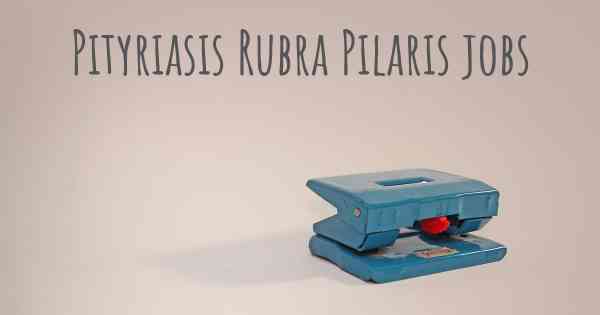Can people with Pityriasis Rubra Pilaris work? What kind of work can they perform?
See how people with experience in Pityriasis Rubra Pilaris give their opinion about whether people with Pityriasis Rubra Pilaris can work and what kind of jobs are more appropriated for people with Pityriasis Rubra Pilaris

Can people with Pityriasis Rubra Pilaris work?
Pityriasis Rubra Pilaris (PRP) is a rare and chronic skin disorder that affects the skin's natural shedding process, resulting in the buildup of thick, scaly patches. While PRP can be physically and emotionally challenging, many individuals with this condition are still able to work and lead fulfilling professional lives.
It is important to note that the ability to work with PRP can vary depending on the severity of the condition, the specific symptoms experienced, and the individual's overall health. Some individuals may experience mild symptoms that do not significantly impact their ability to work, while others may have more severe symptoms that require adjustments in their work environment or schedule.
Types of work suitable for individuals with Pityriasis Rubra Pilaris:
1. Office-based jobs: Many individuals with PRP can perform office-based jobs that do not require physical labor or exposure to harsh environmental conditions. These may include administrative roles, customer service, data entry, accounting, or other desk-based tasks.
2. Remote work: With the increasing availability of remote work opportunities, individuals with PRP can explore jobs that can be done from the comfort of their own homes. This allows for greater flexibility in managing symptoms and reduces the need for physical interaction in the workplace.
3. Creative professions: Some individuals with PRP find solace in creative outlets and pursue careers in fields such as writing, graphic design, photography, or art. These professions often offer flexibility in terms of work environment and schedule, allowing individuals to adapt to their specific needs.
4. Consulting or freelancing: Becoming a consultant or a freelancer in a specific area of expertise can provide individuals with PRP the flexibility to manage their workload and schedule according to their symptoms. This allows for better control over stress levels and the ability to take breaks when needed.
5. Supportive work environments: It is crucial for individuals with PRP to seek out supportive work environments that understand their condition and are willing to make reasonable accommodations. This may include flexible working hours, the option to work from home when necessary, or adjustments to the physical workspace to minimize discomfort.
Challenges and considerations:
While many individuals with PRP can continue working, it is important to acknowledge the challenges they may face:
- Physical discomfort: PRP can cause itching, pain, and discomfort, which may affect concentration and productivity. Managing symptoms through appropriate medical treatment and skincare routines is essential.
- Fatigue and energy levels: PRP can cause fatigue, making it important for individuals to manage their energy levels and take breaks when needed. Prioritizing self-care and maintaining a healthy lifestyle can help mitigate fatigue.
- Psychological impact: Living with a chronic skin condition like PRP can have psychological effects, such as decreased self-esteem or increased anxiety. Seeking support from healthcare professionals, support groups, or therapists can be beneficial.
- Work-life balance: Individuals with PRP may need to strike a balance between work responsibilities and managing their condition. Open communication with employers and colleagues can help create a supportive work environment.
Conclusion:
While Pityriasis Rubra Pilaris can present challenges, many individuals with this condition are still able to work and pursue fulfilling careers. The key is to find suitable work environments, make necessary accommodations, and prioritize self-care. With proper management and support, individuals with PRP can lead productive and successful professional lives.








